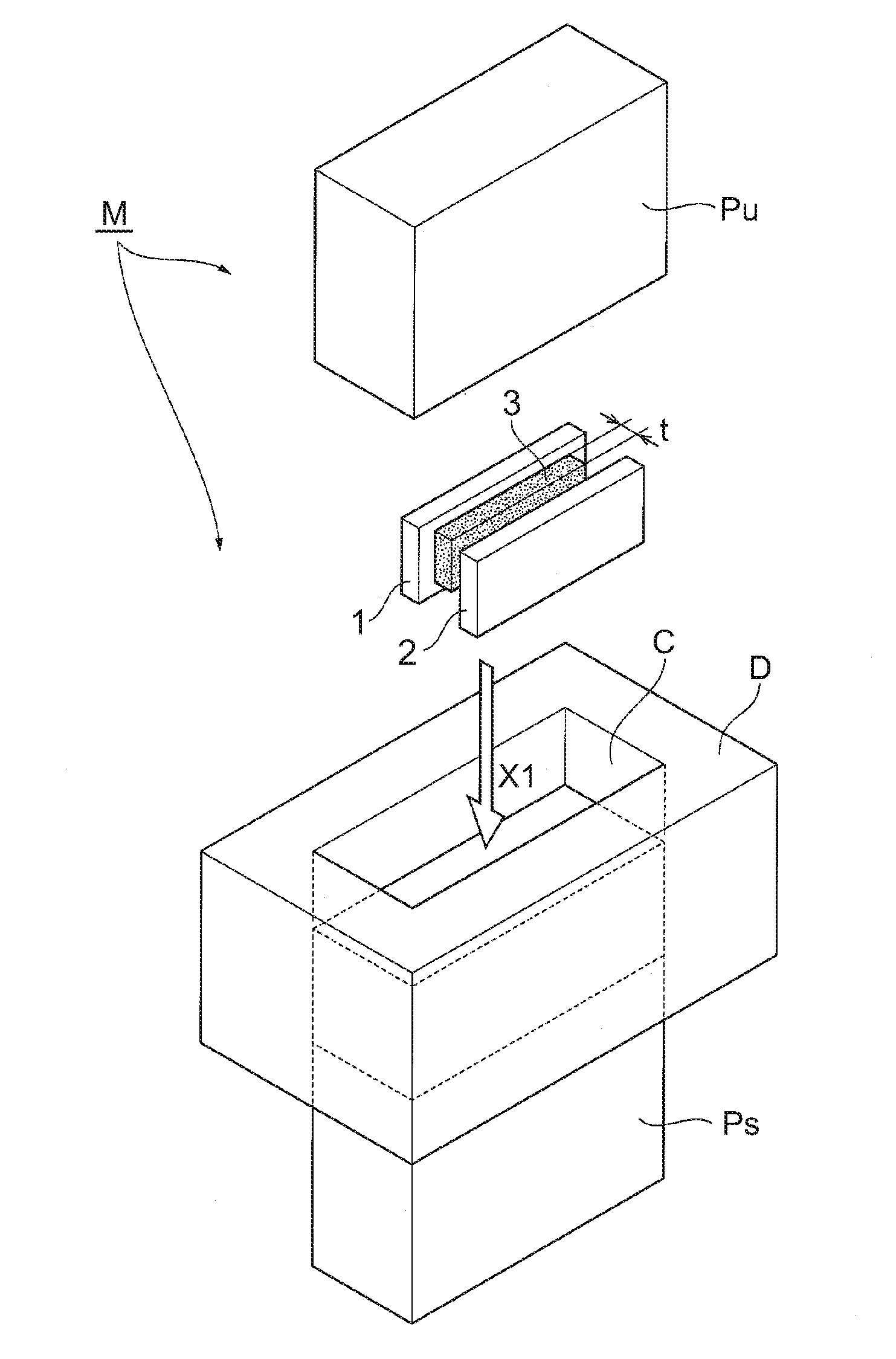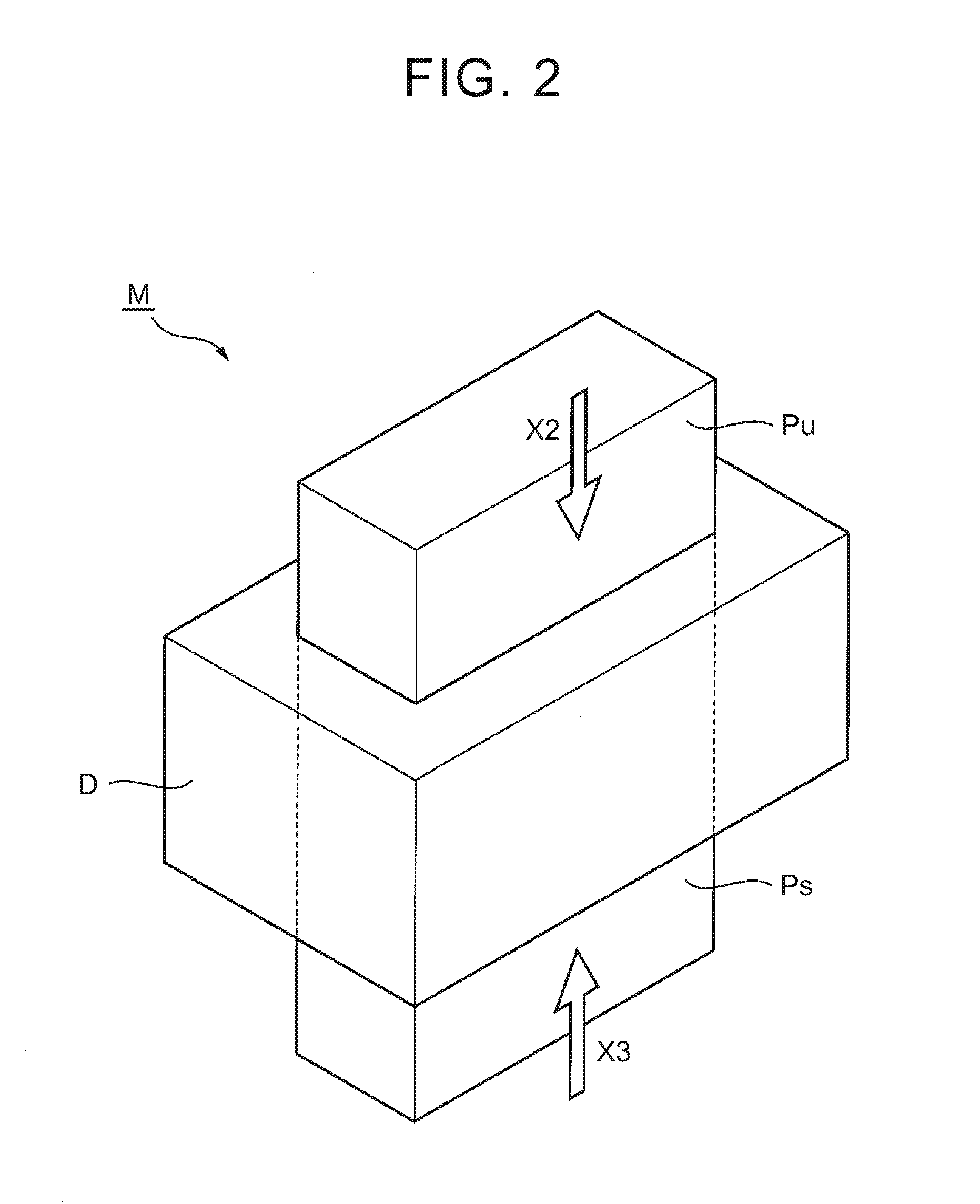Rotor production method
a rotor and motor technology, applied in the direction of stator/rotor body manufacturing, magnetic materials, magnetic bodies, etc., can solve the problems of low motor efficiency and torque performance, cumbersome production method, and large complexity of permanent magnet production, so as to reduce eddy current loss and efficiently produce.
- Summary
- Abstract
- Description
- Claims
- Application Information
AI Technical Summary
Benefits of technology
Problems solved by technology
Method used
Image
Examples
Embodiment Construction
[0038]Hereinafter, a rotor production method according to an embodiment of the invention will be described with reference to the accompanying drawings. An integrated magnet illustrated in the drawings is formed by subjecting two sintered bodies to hot working. Alternatively, three or more sintered bodies may constitute an integrated magnet. In a rotor illustrated in the drawing, one integrated magnet forms one magnetic pole. Alternatively, two integrated magnets in a generally V-shape may form one magnetic pole.
[0039]The rotor production method according to the embodiment will be described below. FIG. 1 is a perspective view illustrating a first step of the rotor production method according to the embodiment. FIGS. 2 and 3 are perspective views sequentially illustrating a second step of the rotor production method. FIG. 4 is a perspective view illustrating a third step of the rotor production method.
[0040]First, a molding die M is provided. As illustrated in FIG. 1, the molding die ...
PUM
| Property | Measurement | Unit |
|---|---|---|
| thickness | aaaaa | aaaaa |
| temperature | aaaaa | aaaaa |
| temperature | aaaaa | aaaaa |
Abstract
Description
Claims
Application Information
 Login to View More
Login to View More - R&D
- Intellectual Property
- Life Sciences
- Materials
- Tech Scout
- Unparalleled Data Quality
- Higher Quality Content
- 60% Fewer Hallucinations
Browse by: Latest US Patents, China's latest patents, Technical Efficacy Thesaurus, Application Domain, Technology Topic, Popular Technical Reports.
© 2025 PatSnap. All rights reserved.Legal|Privacy policy|Modern Slavery Act Transparency Statement|Sitemap|About US| Contact US: help@patsnap.com



